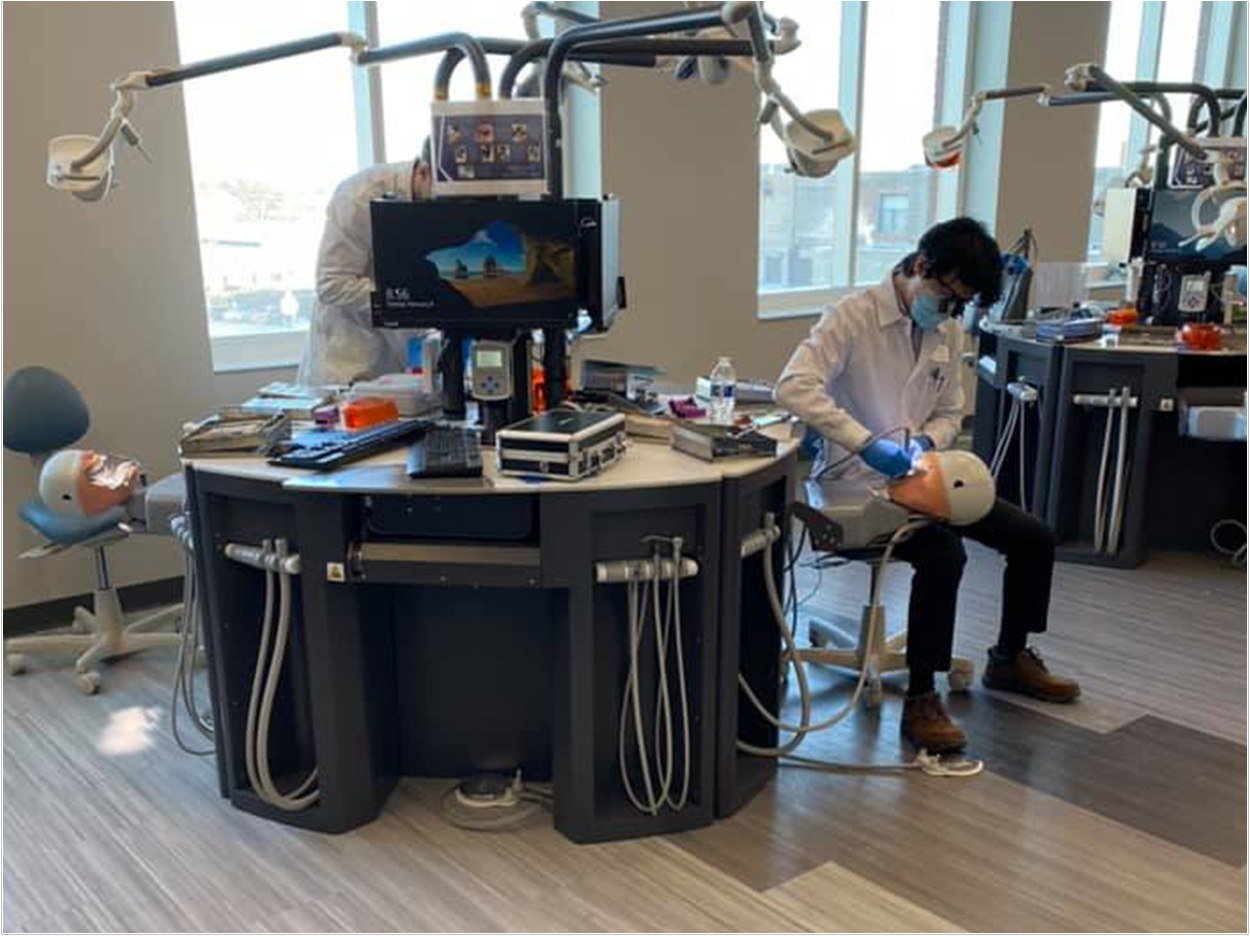
Restrictions put in place due to the COVID-19 pandemic forced the Creighton University School of Dentistry to significantly adapt its curriculum and other programs to ensure its students were prepared to take their licensure exams and begin their professional careers.
“It’s definitely been a challenge keeping the dental education program vital and robust since mid-March of 2020,” said Dr. R. Scott Shaddy, chair of the Department of General Dentistry and board coordinator.
“Quite honestly, Creighton showed national leadership during this uncertain time. We never closed, with faculty providing emergency care in our Acute Care Clinic until local governance opened dental clinics completely,” Shaddy said.
While the ongoing labors to move each of the four classes on to graduation or the next academic year were wide-ranging, Creighton said, a herculean effort also has gone into preparing graduates to begin their practices in dozens of states.
“Addressing national board clinical exam changes and challenges has become a daily part of life for our board coordinators and our entire administration,” said Dr. Scott Radniecki, assistant professor of general dentistry, director of emergency services, and board coordinator.
“Pending job opportunities, residencies, and family decisions, our graduates were potentially going to more than 40 different states,” said Radniecki.
Some states accept only one of the three major exams, some two, and many accept all three, Creighton said. Some require all sections of the exams, and some require only a few sections.
“It’s not easy for students to navigate which exam to take, what sections to take, and how to get licensure if they plan to practice in multiple states, or don’t yet know where they’re going to practice,” Radniecki said.
Creighton offers the exams from the Western Regional Examination Board (WREB) and Commission on Dental Competency Assessments (CDCA) so students can take two of the three national exams in its clinic, Radniecki said.
With the pandemic restrictions and difficulty finding ideal patients, Creighton said, the three major licensure exam companies scrambled in 2020 to create manikin exam sections to replace patient portions.
State boards also had to decide which manikin exams they would accept and whether specific criteria such as completing two fillings or specifically doing a posterior and an anterior filling would be required.
Radniecki promoted a manikin-based licensure exam with multiple state boards and worked closely with the WREB as it lobbied state boards to accept its exam.
As part of his role on the WREB Operative Committee, Radniecki also worked to help create a psychometrically sound manikin exam that’s as close to a patient-based exam as possible, Creighton said. Shaddy did similar work with the CDCA exam.
The university was on spring break when local, regional, and national shutdowns began in March 2020. Students were advised to shelter in place and not return to campus, and online learning began.
However, the WREB and CDCA exams originally were scheduled at Creighton for April 2020. The regional board agencies postponed the exams and began next steps.
“Our students didn’t know when they might be able to test for licensure, and if they would be able to have patients for testing,” said Shaddy.
Many of the state boards eventually voted for manikin-based examinations, but a few states insisted on patient-based exams. The WREB announced its makeup exam for Creighton candidates would be manikin-based.
“This put some of our students into a quandary, as their states were expecting patient-based exams only,” Shaddy said. “You can imaging the anxiety students faced, with so many shifting dates and exam offerings. Fortunately, the CDCA committed to offering both types of exams June 13 and 14.”
During this same time, the dental school had to organize and schedule all four classes to rotate through the manikin laboratory to complete all fourth-quarter procedures. Many seniors had completed their requirements, but some returned to the Creighton clinic to see patients after it reopened in May.
“We had a few graduating seniors take board exams at other schools due to their particular circumstances, but most of our graduating seniors took the rescheduled CDCA exam or the WREB exam at Creighton,” Radniecki said.
“Between April 6 and May 11, the manikin lab had to accommodate multiple rotations of roughly 400 students. However, due to the initial restriction of one-fourth capacity in any room, our 120-person lab became a 30-person lab,” said Shaddy.
“This led to rotations beginning daily at 7 am and ending at 6 pm or later. Our faculty heroically and without complaint rose to the occasion with each of these increased demands,” Shaddy said.
Because of the issues surrounding the 2020 licensure exams, Creighton moved the 2021 exam schedule for fourth-year students up from a traditional April date to February. Lobbying of state dental boards and awaiting their deliberations continues.
The question is, Shaddy said, “Will they extend the manikin-based exam through 2021, or will some states still require patient-based exams?”
Just before the end of 2020, dean Mark Latta, DMD, MS, got a favorable response to Creighton’s request for 2021 manikin-based exams from the Nebraska Board of Dentistry, extending the change through September 1, 2021.
“Many groups and individuals came together to advocate for the students and to meet the demands of the individual states, including our dean, faculty, staff, and administration,” Shaddy said. “The Creighton dental community promptly and willingly put into practice the Jesuit ideal of service to others.”
Related Articles
Mobile Equipment Enables Dental Students to Remotely Build Their Clinical Skills
NDEB Cancels Dental Exams As It Investigates Possible Cheating
Collaboration Ensures New Dentists Are Licensed During the Pandemic












